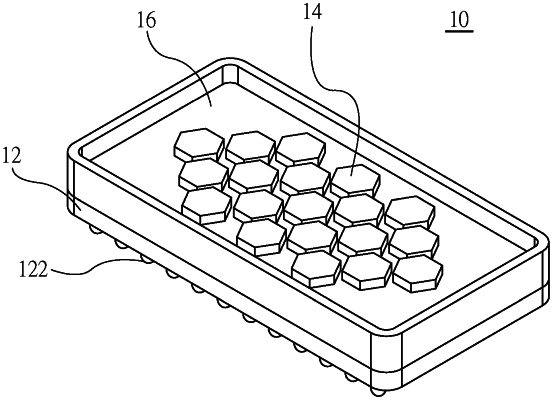| CPC A61B 5/6833 (2013.01) [A61B 5/1477 (2013.01); A61B 5/14546 (2013.01); A61B 5/4866 (2013.01); A61B 2562/028 (2013.01)] | 7 Claims |

|
1. A method of examining a surface of an organism, comprising steps of:
providing a pliable member having a contact layer, a reaction layer, and a plurality of channels, wherein the contact layer has a plurality of spherical projections for examination, wherein the spherical projections have a size in a range of micrometers and are formed of biocompatible materials;
adhering the spherical projections to the surface of the organism by applying a predetermined pressure, wherein the spherical projections continuously collect fluid of the organism as a collected fluid from the surface of the organism by capillary action or by using a micro pump, wherein the spherical projections do not puncture the surface of the organism, wherein the collected fluid is from interstitial parts of the organism or fluid secreted from a wound of the organism, and wherein the collected fluid has a substance to be analyzed;
continuously flowing the collected fluid to the contact layer through the spherical projections; and
continuously flowing the collected fluid from the contact layer to the reaction layer through the plurality of channels wherein the channels have a size in the range of micrometers and are formed of biocompatible materials, wherein a target substance of the substance to be analyzed reacts with examining molecules, wherein the examining molecules are specific apoenzyme, deoxyribonucleic acid (DNA), single-strand binding protein, primers for reactants, polymeric apoenzyme or monomeric nuclei acid, and a reaction unit in the reaction layer, wherein the reaction unit is a molecular beacon, color protein, fluorescent protein or an electro-magnetic signal, thereby providing an indication of health or illness of the organism based on visible changes of the reaction unit,
wherein micrometric elements of the biocompatible materials of the channels absorb excessive substance of the substance to be analyzed and a number of non-examination targets in the reaction layer is decreased, thereby adjusting composition ratios of the biocompatible materials, changing absorbed substance after the channels have absorbed the excessive substance of the substance to be analyzed, and changing examination sensitivity and peculiarity, wherein the biocompatible materials are hydrophobic or hydrophilic,
wherein when the biocompatible materials are hydrophobic, the collected fluid passing the spherical projections for examination having the size in the range of micrometers form a plurality of micro-channels of 30-80 μm wide, and the hydrophobic biocompatible materials are polymerized by multiple repeating acrylate having biocompatibility and composed of isobornyl acrylate, 1,10-decanediol diacrylate, pentaerythritol tetraacrylate or acrylate oligomer of different composition ratios, and
wherein when the biocompatible materials comprise hydrophilic formed of hydrogel, the hydrogel has a property of absorbing the collected fluid and is formed by polymerizing multiple hydrophilic monomers in a ratio ranging from 100:1 to 1:1.
|